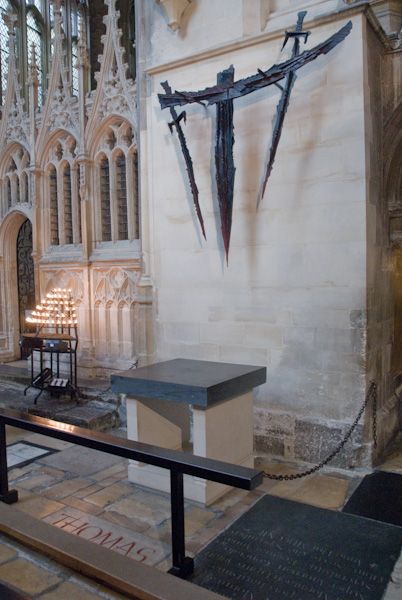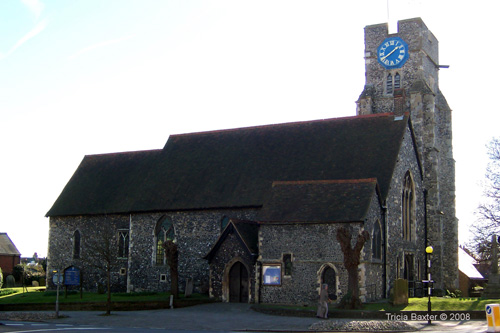
Fond memories of today's feast, St Thomas a Becket. A few years ago myself and Fr Owen (he of EWTN fame) went to Canterbury Cathedral on this day to visit the site of St Thomas a Becket's martyrdom. It would have been our second visit. When we got to the cathedral Vespers were just finishing and the assembled congregation was dispersing for the warm comfort of their homes (it was a bitterly cold day). We managed to get a few moments at the "martyrdom", as the spot is called, before being tossed out of the cathedral by a verger (first time I was ever thrown out of an Anglican church). However, lest you think we had no where to go, we popped into the local hotel to partake of afternoon tea (there too, our second visit).

"The Martyrdom": site of St Thomas's martyrdom
Our first visit had been a year or two before. On that first visit, as with the second, I brought a relic of St Thomas with me - I had been given a first class relic of the martyr when I was in Rome. It was a wonderful moment of grace walking around his cathedral, relic in hand, praying and meditating on his life and death. His body is missing, and has been since the Reformation - hidden by devout monks to save it from desecration by Henry VIII's henchmen. The relic I had was taken from a piece which has been preserved in Rome since before the Reformation (blows your mind that).
I have a fondness for St Thomas, he is a wonderful example of priesthood. He was not always heroic - he was a pretty ambitious character. He was a friend of King Henry II and the two were carousing buddies. Henry wanted a pawn in Canterbury in order to control the Church, so when the Archbishop died he had his mate appointed. However, the Holy Spirit had other plans. No sooner did Thomas put his unworthy rear end on the throne of See of Canterbury but he changed, and rather dramatically at that. He realised what God was putting into his care, and was determined to become a trustworthy and valiant shepherd - and he did. Thomas defended the Church and her people even against the tyranny of his friend. For his troubles he was exiled and eventually martyred - a heroic model for all priests and bishops. May he intercede for our pastors in these times, and give them some of the courage he had in defending the Church and proclaiming Christ.

St Dunstan's Anglican church, Canterbury
Canterbury is also the city where the head of St Thomas More is buried. His daughter, Meg, managed to get her father's head after his execution, and she preserved it until she died: it was buried with her in her husband's family vault which is situated in St Dunstan's Church, Canterbury. The church, Anglican now, has a lovely shrine to St Thomas, which, to be honest, is a bit ironic and strange given that he was martyred because he refused to reject the Catholic Church and join the new Church of Henry VIII.

The parallels between St Thomas More and St Thomas a Becket are uncanny: both born in London - both Thomas. Both become Lord Chancellor of England, both friends of the monarcy - both called Henry. Both defended the Church from the assault of the monarch and both martyred by the aforesaid king because they would not choose the king and state over God and Church. Henry VIII was well aware of the parallels - in 1538 he destroyed the shrine of St Thomas a Becket in order to wipe out the memory of the saint's defence of the Church, and try as he could he could not do so, he may have also done so in an attempt to erase the memory of Thomas More- he failed there too. Martyrs are never forgotten, but grow and become more loved for their heroism. Secularists please take note.
May your blessings always be with me saint jude by ameya jaywant narvekar
ReplyDelete